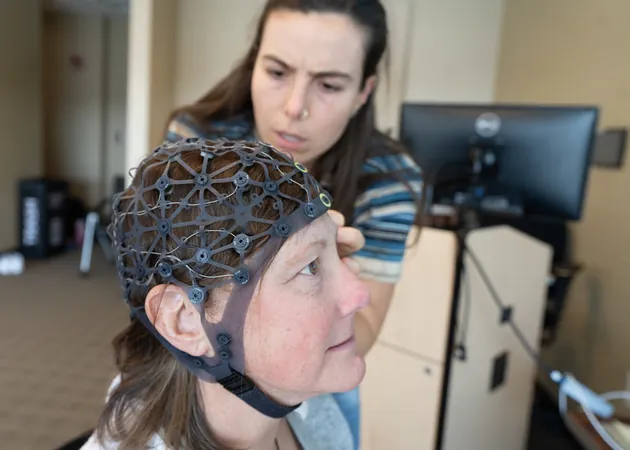
Transforming Lives: How Argentine Tango is Reviving Cancer Survivors
2025-04-16
Author: Arjun
The Healing Power of Dance for Cancer Survivors
In a groundbreaking initiative, adapted Argentine tango dance therapy is emerging as a beacon of hope for breast cancer survivors grappling with neuropathy—an all-too-common side effect of chemotherapy. This innovative approach not only assists survivors in regaining balance and sensation but also aims to ‘rewire’ their brains, enhancing overall functionality post-treatment.
Leading the Charge
Dr. Lise Worthen-Chaudhari from The Ohio State University Comprehensive Cancer Center is spearheading this study. She highlights how the joyous fusion of dance and music can revolutionize the way the body ‘relearns’ sensations, providing a unique avenue for regaining foot and hand sensitivity, as well as improving gait and balance.
A Widespread Concern: Neuropathy
Neuropathy can disrupt everyday life, causing numbness and burning sensations that increase the risk of falls. Studies suggest that this condition affects up to 80% of cancer survivors treated with taxane-based chemotherapies, rendering simple tasks daunting. Dr. Worthen-Chaudhari emphasizes that this dance therapy is not just a lifesaver; it also significantly enhances the quality of life for many.
Reclaiming Lives, One Step at a Time
"This research is fundamentally about helping survivors thrive rather than merely survive," explains Dr. Worthen-Chaudhari. The objective is to offer an enjoyable, effective means for enhancing sensory motor skills while alleviating the anxiety around falling, ultimately leading to improved overall well-being for participants.
Revolutionary Findings from Initial Studies
Preliminary data from a 2024 pilot study revealed that even small doses of social dance could significantly enhance dual-task performance—this is the ability to perform physical activities while simultaneously engaging cognitively. This means that survivors could walk and socialize more effectively.
Ambitious Plans Ahead
Kicking off a larger five-year study, Dr. Worthen-Chaudhari and her team plan to recruit 140 breast cancer survivors at both The Ohio State University and Yale University. The study aims to drill down into how tango therapy can sustain its benefits over time, ultimately improving movement and cognitive functions honored in everyday life.
Why Choose Argentine Tango?
But why adapt Argentine tango specifically? The rhythmic beats, clocking in at around 120 beats per minute, activate a neurological response known as entrainment, where the rhythms of movement and music align perfectly. This synchronization helps stimulate nerve firing in the brain, which is critical for remapping damaged nerve pathways.
Making Therapy Fun and Effective
Keeping participants engaged is another impressive aspect of this approach; creating a fun, social atmosphere has proven essential in ensuring compliance and commitment to the therapy. 'This exciting form of rehabilitation not only enhances physical sensations but significantly elevates overall life quality,' Dr. Worthen-Chaudhari concludes.

 Brasil (PT)
Brasil (PT)
 Canada (EN)
Canada (EN)
 Chile (ES)
Chile (ES)
 Česko (CS)
Česko (CS)
 대한민국 (KO)
대한민국 (KO)
 España (ES)
España (ES)
 France (FR)
France (FR)
 Hong Kong (EN)
Hong Kong (EN)
 Italia (IT)
Italia (IT)
 日本 (JA)
日本 (JA)
 Magyarország (HU)
Magyarország (HU)
 Norge (NO)
Norge (NO)
 Polska (PL)
Polska (PL)
 Schweiz (DE)
Schweiz (DE)
 Singapore (EN)
Singapore (EN)
 Sverige (SV)
Sverige (SV)
 Suomi (FI)
Suomi (FI)
 Türkiye (TR)
Türkiye (TR)
 الإمارات العربية المتحدة (AR)
الإمارات العربية المتحدة (AR)